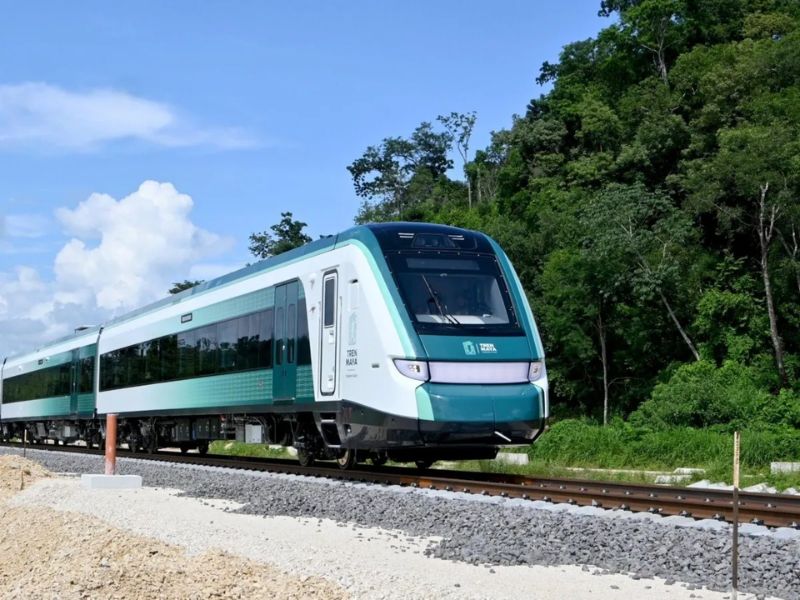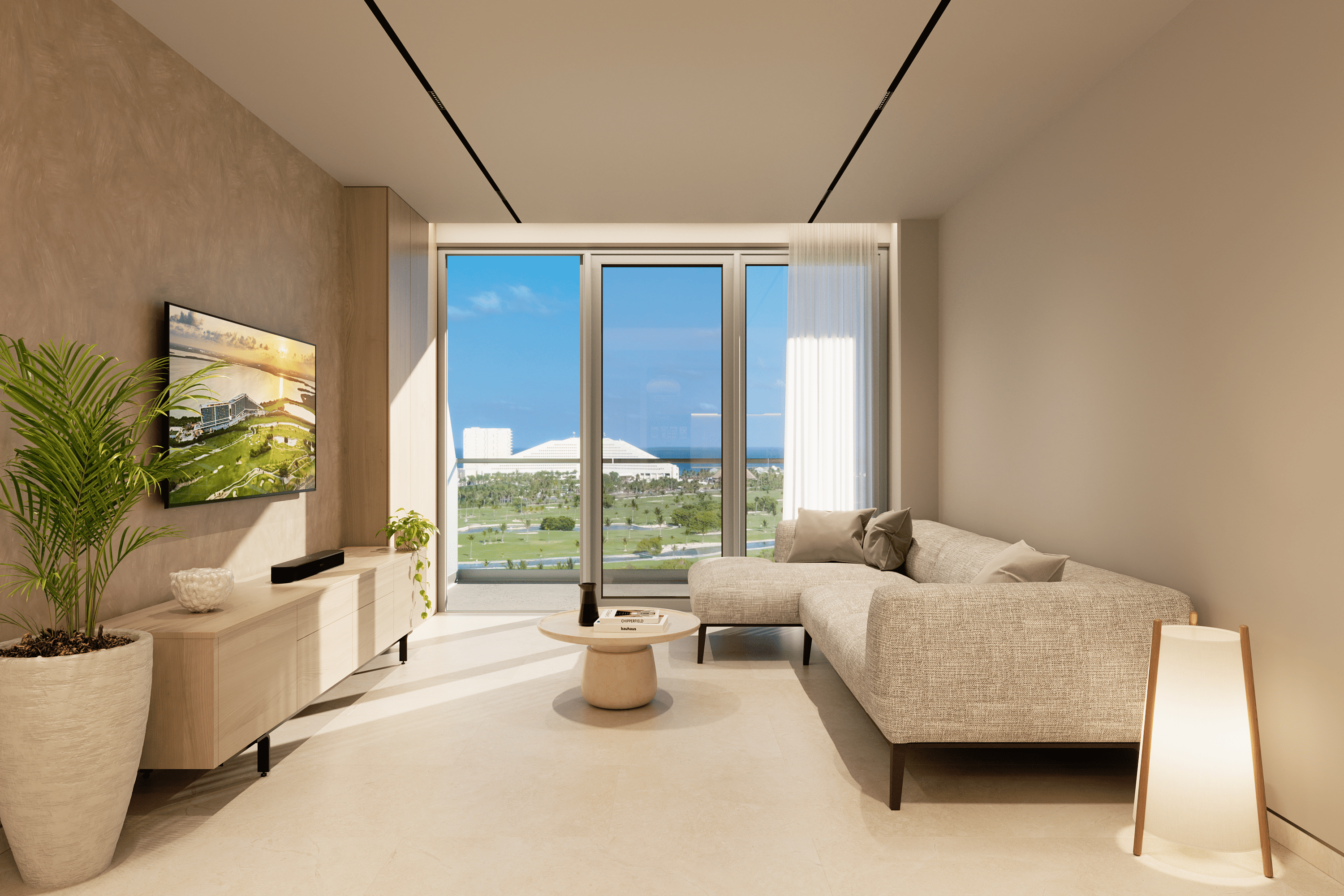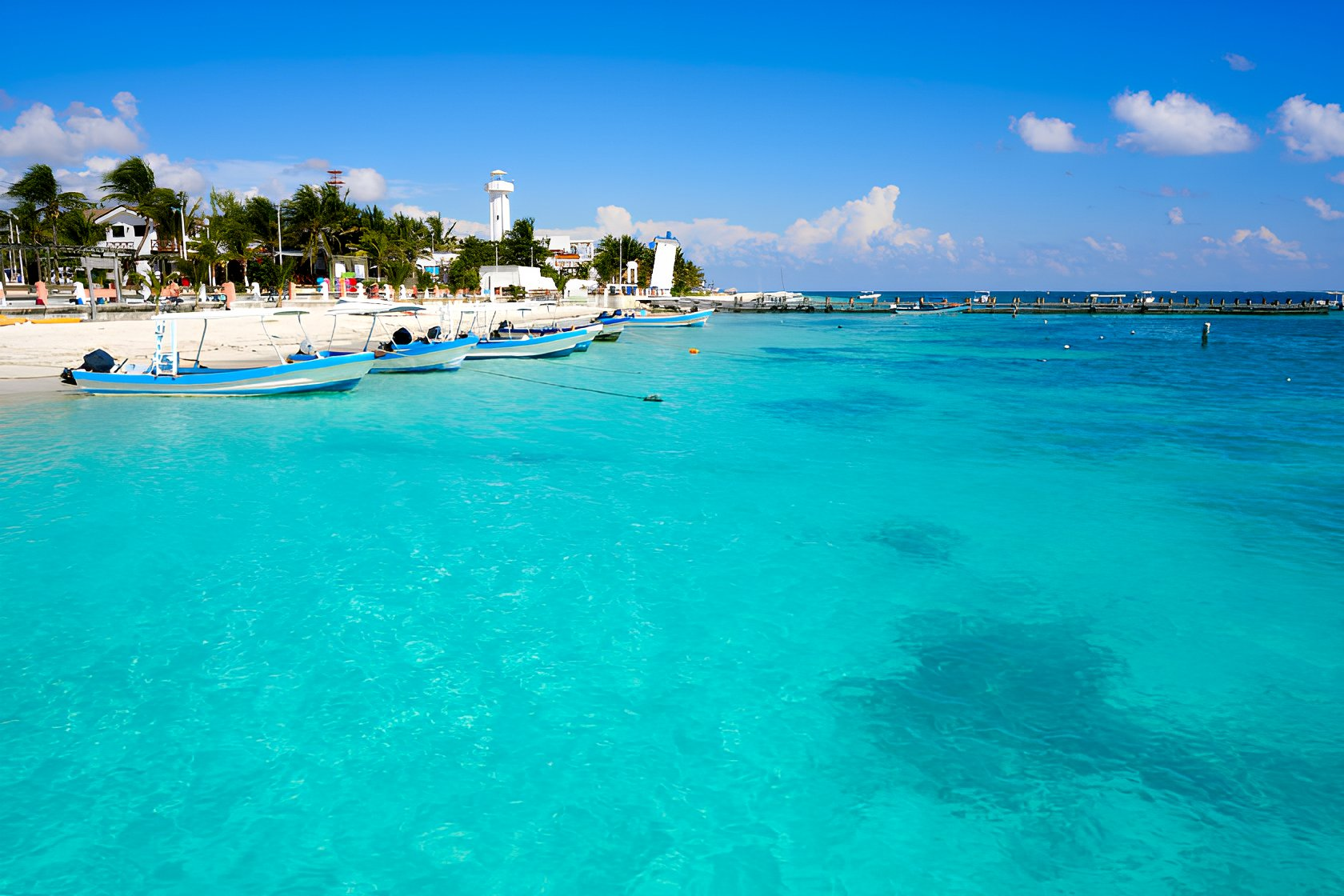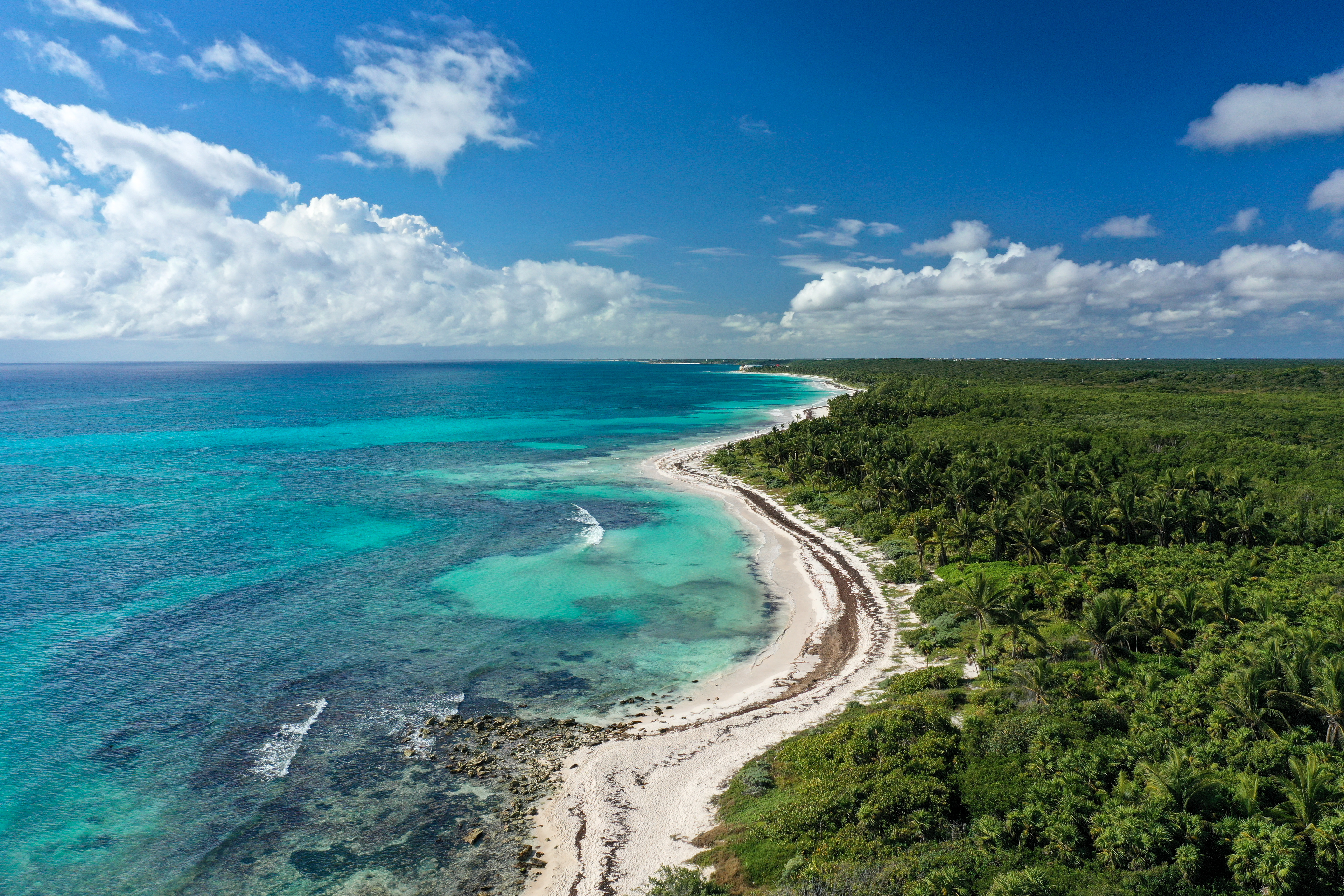
Inauguration of Section 5 Mayan Train: Cancun - Playa del Carmen Route
The 5th section of the Tren Maya promises to transform travel between Cancun and Playa del Carmen, not only bringing destinations closer but also opportunities.
This project, more than an infrastructure work, is a bridge to the future of tourism and the local economy. Discover how this new route is poised to change the face of the Riviera Maya.
Inaugural tour of Section 5 of the Mayan Train
February 29 marked the inauguration of Section 5 of the Tren Maya, an event during which the President undertook a maiden voyage from Cancun to Playa del Carmen. Aboard the "Jaguar Rodante", President López Obrador began his journey in Cancun at 11:57 a.m., accompanied by Mara Lezama, Governor of Quintana Roo.
Luisa María Alcalde, Secretary of the Interior; General Luis Cresencio Sandoval, Secretary of Defense; Admiral José Rafael Ojeda, Secretary of the Navy; María Luisa Albores, Secretary of the Environment; and Diego Prieto, Director of INAH, were also part of this journey.


Commitment to nature: Responsible construction of Section 5 of the Mayan Train
In a press conference, the President acknowledged that the 5th section of the Mayan Train is the one that has had the most legal problems and geographical difficulties for its construction.
He indicated that the Mexican Government, through an inter-institutional work, carried out the corresponding specialized studies on 1,554 kilometers of railroad tracks, particularly in this route that guarantees the protection of the environment and the historical and cultural heritage. The federation opted to build a 90-kilometer second floor or viaduct in order to protect cenotes and subway rivers and the native fauna.
The general resident engineer and commander of the Felipe Ángeles Engineering Group, Ricardo Vallejo Suárez, explained that the construction of section 5 north is based on geological, geophysical, geotechnical and hydraulic studies, a geoexploration campaign, as well as a coordinated work execution program.
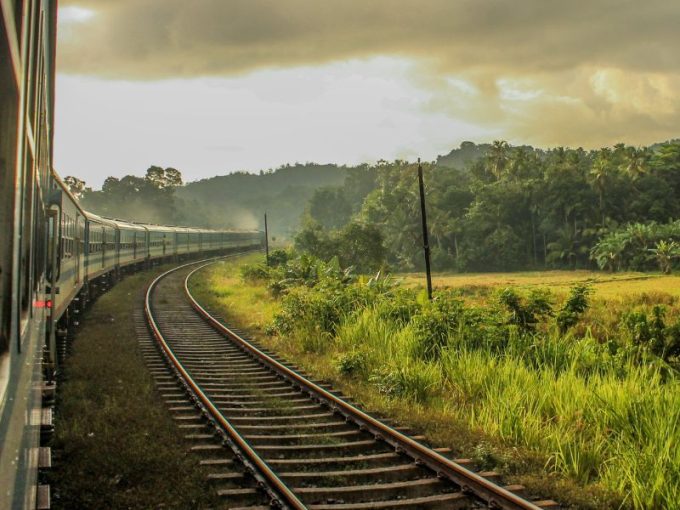
Environmental and cultural impact of Section 5 of the Mayan Railroad.
The Secretary of the Environment and Natural Resources (SEMARNAT), María Luisa Albores González, explained that the Mexican Government has 1,397,000 hectares of conservation land in sections 1, 2, 3, 4 and section 5. Mayan Train The Executive decrees the creation of nine Natural Protected Areas (NPAs) in the region: Wanha', Nuevo Uxmal, Manglares de Puerto Morelos, Playa Delfines, Jacinto Pat, San Buenaventura, Playa Chenkan, Cenote Aerolito and Bajos del Norte, as well as seven Areas Voluntarily Designated for Conservation, consolidated directly by agrarian communities.
President López Obrador emphasized that the federal government also preserves archaeological sites in the south-southeast region as part of the nation's historical and cultural heritage.
Prices vary according to route and service. For short routes, prices are economical. However, for longer routes, the cost increases moderately.
For example, to travel between Cancun and Palenque via the Train, Mexican citizens from other regions will have to pay specifically $2118.50 pesos.
On the other hand, for foreign visitors, ticket prices are $3382.00 Mexican pesos. This cost represents not only the trip itself. It also represents the unique experience of exploring the rich culture and breathtaking landscapes that this route offers.
These differentiated prices seek to balance access for local residents while attracting tourists from all over the world.

Preserving the essence of Mayan culture
The general director of the National Institute of Anthropology and History (INAH), Diego Prieto Hernández, said that the agency promoted the archaeological zone of El Meco, north of Cancun, through the Archaeological Zones Improvement Program (Promeza). Therefore, it already has a coastal strip so that, like Tulum, it will be a site that combines the natural beauty of the Caribbean Sea with the Mayan city of the Eastern Coast.
As for archaeological salvage along the entire route of the Mayan Train, the following have been registered and recovered as of February 29: 60,574 immovable goods such as foundations, barricades and pyramidal bases; 1,973 movable goods, including metates and ceramics, of which 1,518 are in the process of restoration; 1,427,61 ceramic fragments; 699 human burials and 2,252 natural features associated with civilizations.
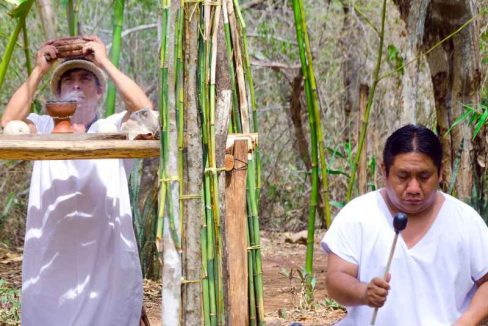
Mayan Train will promote tourism and economic development
The inauguration of this section 5 Tren Maya reflects the commitment to improve transportation infrastructure in the region, thus promoting tourism and local economic development. This effort is part of a broader initiative to connect the main tourist attractions in southeastern Mexico, providing access to beautiful beaches and cultural destinations through a more sustainable and efficient transportation option.
The completion of section 5 Tren Maya is approaching, and with it, a new era for the Riviera Maya. So if you are considering investing in this wonderful region, at iBrokers we are ready to guide you and offer expert advice every step of the way.
Contact us and don't forget to follow us on Facebook, Instagram and YouTube Make the most of all the opportunities that this great Mayan Train project has to offer!
